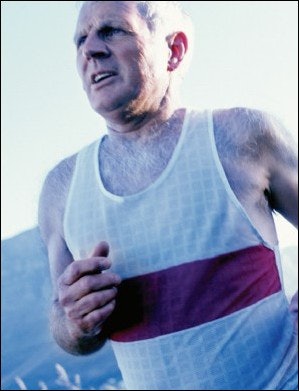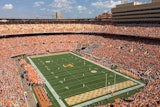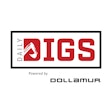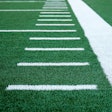Designing programs for aging bodies requires knowledge not just of exercise, but also of the physiological changes that come with age

One of the fastest ways to realize that you have aged is to open an old photo album and compare pictures from decade to decade. What you looked like across the passage of time is vastly different. For most, gone are the wrinkle-free face, the slate-black hair and the six-pack abs. For many, these telltale signs of change are the start of the aging process.
As life expectancy has almost doubled during the past century, gerontologists now are discovering that age in years doesn't necessarily correlate with physiological age. In fact, normal physiological aging is quite variable, according to investigators involved in the Baltimore Longitudinal Study of Aging, a long-term National Institute on Aging study begun in 1958 that has tracked the lives of more than 1,000 people from age 20 to 90 and beyond. Not only do individuals age overall at vastly different rates, it is quite likely that age-related changes in various cells, tissues and organs differ, as well. For instance, kidney function may decline more rapidly in some individuals; in others, bone strength may diminish faster. The organs that age fastest in one person may not age as rapidly in another. This suggests that genes, lifestyle and disease can all affect the rate of aging, and that several distinct processes are involved.
What actually happens to the body as we age and how do we, as fitness professionals, program around these changes?
Even given the variability in aging from person to person (and from organ to organ), some generalities can be made, based on data from the Baltimore Longitudinal Study of Aging.
The Heart.
Heart muscle thickens with age. Maximal oxygen consumption during exercise declines in men by about 10 percent with each decade of adult life and in women by about 7.5 percent. This decline occurs because the heart's maximum pumping rate and the body's ability to extract oxygen from blood both diminish with age.
Recent research published in the New England Journal of Medicine shows that cardiovascular capacity is a better predictor of longevity than obesity, heart disease or smoking. In addition, a landmark study that appeared in the September 2001 issue of Circulation: A Journal of the American Heart Association, revealed that even after a 30-year layoff, a six-month endurance-training program can reverse the decline in cardiovascular fitness that occurs during middle age.
The Arteries.
Arteries tend to stiffen with age. The older heart, in turn, needs to supply more force to propel the blood forward through the less elastic arteries, causing high blood pressure and enlarging the heart. Both are serious risk factors for heart disease. After menopause, women are at especially high risk.
However, a study presented at the Experimental Biology meeting in 2002 by Kerrie Moreau of the University of Colorado's Human Cardiovascular Research Laboratory, showed that a bit of moderately paced walking - not even brisk walking - can transform stiffening arteries into more pliable ones, like younger women have. Participants in Moreau's 12-week study, all of whom were about age 60, improved the elasticity of their arteries by nearly 50 percent. The women walked just five days a week for 40 to 45 minutes.
Body Fat.
Typically, body fat gradually increases in adulthood until individuals reach middle age. Then it stabilizes until late in life, when body weight tends to decline. As weight falls, older individuals tend to lose both muscle and body fat. With age, fat is redistributed in the body, shifting from just beneath the skin to deeper organs. Women typically have a higher percentage of body fat than men. However, because of differences in how this fat is distributed - on the hips and thighs in women and on the abdomen in men - women may be less susceptible to certain conditions, including heart disease.
According to AARP, obesity among people older than 50 nearly doubled from 1982 to 1999, rising from 14.4 percent of that age group to 26.7 percent.
Muscle.
Without exercise, estimated muscle mass declines 22 percent for women and 23 percent for men between the ages of 30 and 70. Add to this a loss in strength of 50 percent, and it doesn't take long to see how many older adults can lose their ability to function independently. Exercise can slow the rate of loss in all of these.
The Tufts Study, published in the New England Journal of Medicine, showed that high-intensity strength training increased muscle strength by 113 percent in subjects ages 72 to 98 in just 10 weeks. Additional research, published in The Journals of Gerontology Series A: Biological Sciences and Medical Sciences in 2002, showed that older men, having increased their strength and muscle mass, were able to retain both by training one day a week (three sets of 10 reps), at 80 percent of their one-rep maximum lift.
Bones.
Bone mineral is lost and replaced throughout life; loss begins to outstrip replacement around age 35. This loss accelerates in women at menopause.
Fifty percent of postmenopausal women (over the age of 50) have the initial stages of osteopinia; the need to assess bone density has never been greater. Physicians today can identify people who already have osteoporosis, or are at risk, before fractures occur. A bone density test, in the hands of an operator who understands it, is a powerful motivator and retention tool.
The National Osteoporosis Foundation recommends the use of these tests. In addition, they recommend the incorporation of a weight-bearing exercise program to assist in the fight against the disease. The American College of Sports Medicine also suggests weight-bearing exercise as a means for preserving bone.
The Senses.
Difficulty focusing close up may begin in the 40s; the ability to distinguish fine details may begin to decline in the 70s. From age 50 on, there is increased susceptibility to glare, greater difficulty in seeing at low levels of illumination, and more difficulty in detecting moving objects.
It also becomes more difficult to hear higher frequencies with age. Even older individuals who have good hearing thresholds may experience difficulty in understanding speech, especially in situations in which there is background noise. Hearing declines more quickly in men than in women.
The Brain.
With age, the brain loses some of the structures (axons) that connect nerve cells (neurons) to each other, although the actual number of neurons seems to be less affected. The ability of individual neurons to function may diminish with age. Recent studies indicate that the adult nervous system is capable of producing new neurons, but the exact conditions that are critical for this have yet to be determined.
A landmark study appearing in the February 2003 issue of the Journal of Gerontology: Medical Sciences indicates that three key areas of the brain adversely affected by aging show the greatest benefit when a person stays physically fit. The findings provide the first empirical confirmation of the relationship between cardiovascular fitness and neural degeneration as predicted in various academic studies on aging and cognition in both animal and human populations. According to the study's author, "It is fitness as it interacts with age that has the positive effects. Older adults show a real decline in brain density in white and gray areas, but fitness actually slows that decline."
Other results from the study show that exercise programs involving both aerobic exercise and strength training produced better cognitive results than either one alone. Older adults also benefited more than younger adults, possibly because older adults have more to gain as age-related declines become more prevalent. And finally, those who performed more than 30 minutes of exercise per session saw the greatest benefits, a finding consistent with many existing guidelines for adults.
This and other studies show why incorporating a "thinking" component into physical activity programs fulfills an essential role in addressing cognitive health in the older adult. For example, when out on nature walks, challenge older adults to identify trees or plants along the route, or create a walking route where participants have to solve puzzles or clues to reach the next checkpoint.
The Lungs.
Between the ages of 20 and 60, maximal breathing capacity may decline by about 40 percent, while the rate of airflow through the airways slowly declines after age 30, and the maximal force one is able to achieve on inspiration and expiration also decreases. In older adults, normal breathing will typically remain adequate, even in the very old. However, when there is a need for increased breathing capacity, the lungs may not be able to keep up with demand.
Avoiding smoking is the best way to reduce the effect of aging on the lungs, but numerous studies have shown that exercise can improve the reserve capacity of the lungs.
The Kidneys.
The role of the kidneys is that of waste filters, which with age gradually become less efficient at extracting wastes from the blood. Exercise is beneficial for most people with kidney problems and safe besides - although exercise programs should be individualized and approached progressively, taking into account any anemia. The scientific literature seems to agree that exercise, even gentle exercise, has real physical and psychological benefits for the person with chronic renal failure.
The Bladder.
Bladder capacity declines. Urinary incontinence, which may occur after tissues atrophy, particularly in women, can often be managed through exercise and behavioral techniques.
Once you and your clients accept these changes as part of the aging process, you can then set out to reduce their impact on quality of life. The first step is to know how to program your client properly, based on his or her current and desired level of function.
When older adults walk into your fitness facility, they make the choice to leave or stay depending on whether your facility and programs will meet their needs. But as a facility owner or manager, you too must assess whether your environment and programming provide the right fit for an older clientele. Why? Mature participants are as diverse in their needs and abilities as the many health and wellness organizations that seek to attract them. That's why to achieve success with this market, it's imperative for you to target a specific segment of the older population.
To choose the specific market segment you wish to serve, the first step is to identify the current level of function in the population for which you want to provide programming. In Physical Dimensions of Aging (Human Kinetics, 1995), Waneen Spirduso, a professor of kinesiology and health education at the University of Texas at Austin, broke the mature population into the following five levels:
• Physically dependent - individuals who cannot execute some or all basic activities of daily living.
• Physically frail - individuals who can perform basic activities of daily living, but who cannot perform some or all of the activities necessary to live independently, generally due to a debilitating disease or condition that physically challenges them on a daily basis.
• Physically independent - individuals who live independently, usually without debilitating symptoms of major chronic diseases, but who have low health and fitness reserves.
• Physically fit - individuals who exercise at least twice a week for their health, enjoyment and well-being, plus enjoy high health and fitness reserves.
• Physically elite - individuals who train on an almost daily basis and either compete in seniors' sports tournaments or work in a physically demanding job.
Your decision about which functional level to serve will dictate what programming you offer, as well as who you hire and how you design and market your facility and programs. In short, functional level will influence every aspect of your environment, as you strive to meet the specific needs of this group.
When deciding which 50-plus market segment to pursue, the next step is to consider the most immediate fitness needs for older adults in each level of function. For instance, although aerobic conditioning provides health benefits to older adults, it is of little or no use to someone within the first two levels of function.
Generally, individuals within the five distinct levels of function have the following immediate exercise needs:
Physically dependent.
Needs: movement that helps maintain or improve physical function for basic self-care - strength, range of motion, balance and coordination necessary for self-feeding, bathing, dressing, toileting, transferring and walking.
Concentrate on activities that improve hand strength and agility, arm strength, shoulder and hip range of motion, quadriceps strength, shin-muscle strength, and ankle strength and range of motion.
Physically frail.
Needs: exercise that helps maintain or improve the ability to perform basic and instrumental activities of daily living. "Instrumental activities of daily living" refers to more-complex physical abilities, such as preparing meals, housecleaning, shopping and mobility inside and outside the home. Focus on muscular strength and endurance, joint range of motion, balance and coordination. Use some of the same exercises programmed for the physically dependent, and include additional activities that challenge balance and address postural and gait abnormalities.
Physically independent.
Needs: exercise that helps maintain and improve physical function to remain independent and prevent illness, disability or injury. People in this population have the ability to participate in advanced activities of daily living, such as travel, golf and gardening. However, a large percentage of these individuals are at risk of becoming increasingly dependent. Focus on increasing and building reserve in muscular strength, endurance and flexibility, joint range of motion, balance, coordination and cardiovascular endurance. The primary goal with physically independent people is to educate them about the importance of "prevention of functional loss" and motivate them to significantly increase their health and fitness reserves. Programming that leads these individuals into the next level will help prevent premature disability and functional dependence.
Physically fit.
Needs: exercise that helps build reserves and maintain a specific level of fitness, allowing these individuals to maintain an active, independent lifestyle, continue working in a chosen profession and participate in a wide range of recreational activities. Concentrate on muscular strength, endurance and flexibility, joint range of motion, balance, coordination, agility and cardiovascular endurance. With physically fit older adults, the primary goal is to provide them with current health information and various opportunities to maintain their level of fitness.
Physically elite.
Needs: exercise that helps build reserves and maintain the level of fitness, and provides conditioning for improving performance in competition or in strenuous vocational and/or recreational activities. Include general conditioning in muscular strength, endurance and flexibility, agility and cardiovascular endurance. Additional programming will be sport/activity-specific to improve performance in a desired area. With the physically elite, the health and wellness professional's role is that of facilitator.
According to Walter Bortz of the Stanford University School of Medicine, also past president of the American Geriatric Society, "Much of what we think about aging is not aging but disuse." He describes "disuse" by citing a leg in a cast. The leg shrivels, weakens and looks old, but it didn't really "age." With exercise, the old-looking, old-functioning leg can become vital and active again. But it can't get "younger." As banal as it sounds, says Bortz, exercising and eating healthy foods are the only proven methods to "look and feel younger" and reduce your risk of dying or suffering from age-associated diseases such as circulatory disease, cancer, stroke, arthritis and osteoporosis.
By learning more about the aging process and programming around the older adult's functional level, you become an indispensable link to a person's vibrant, independent, active lifestyle.
Colin Milner ([email protected]) is CEO and Shari Feuz is director of membership of the International Council on Active Aging, 3307 Trutch St., Vancouver, BC V6L 2T3, 866/335-9777. The ICAA will hold "Active Aging 2003" in conjunction with the Athletic Business Conference, Dec. 4-6, in Orlando, Fla.




































